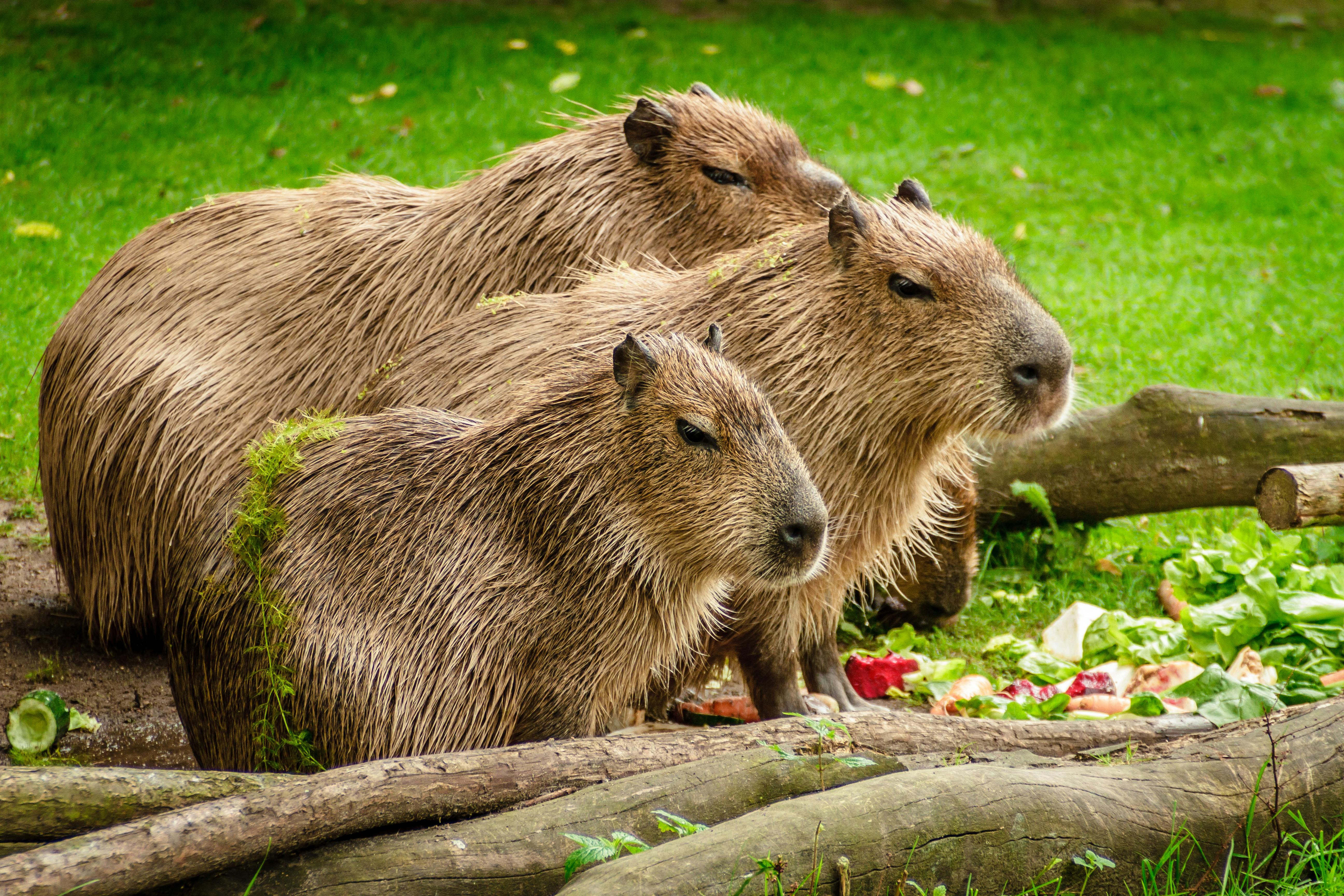Capybaras: The Gentle Giants of the Rodent World
The world is full of amazing animals, and the capybara is no exception. Known as the largest rodent on the planet, these fascinating creatures have a unique story to tell. Let’s dive into their world and discover what makes capybaras so special. Capybaras belong to the rodent family and are native to South America. They are found in various regions, including Argentina, Brazil, Colombia, and Venezuela. Historically, capybaras have always been large in size. In fact, their prehistoric relatives were even larger, reaching the size of a small hippopotamus! Today, an adult capybara can grow up to 1.3 meters long and weigh up to 75 kilograms.

Capybaras in the Modern World
In recent years, capybaras have gained a certain level of fame on the internet due to their calm and friendly demeanor. They are often seen in photographs lounging around with a variety of other animals, seemingly unfazed by their presence. This has led many people to become interested in these gentle giants, increasing their popularity in the world of exotic pets. However, owning a capybara as a pet is not legal in all countries due to their complex care requirements and potential for habitat destruction.
The Capybara Lifestyle
Capybaras are semi-aquatic animals that live near bodies of water. They are great swimmers and can even hold their breath underwater for up to five minutes! They have a unique diet primarily consisting of grasses and aquatic plants, but they also eat fruit and tree bark. Capybaras are known to be social creatures, living in groups of up to 20 individuals.
The Role of Capybaras in the Ecosystem
Capybaras play a crucial role in their ecosystem. They serve as a significant food source for various predators, including jaguars, anacondas, and caimans. Their grazing habits also help maintain the health of grasslands and wetlands. Unfortunately, their populations are under threat due to habitat loss and hunting for their meat and hide.
The Future of Capybaras
With the growing interest in capybaras, efforts are being made to ensure their conservation. Several countries in South America have implemented regulations to protect these creatures and their habitats. It’s important to continue these conservation efforts to maintain the ecological balance and the unique charm these gentle giants bring to our world.
In conclusion, it’s clear that capybaras are intriguing creatures with a unique lifestyle. They are a great reminder of the diverse range of life that our planet supports. Their calm demeanor and friendly nature have captivated people worldwide, but it’s essential to remember that preservation of their natural habitats is crucial for their survival. As admirers of these gentle giants, it’s the responsibility to ensure they continue to thrive in their native environments.





